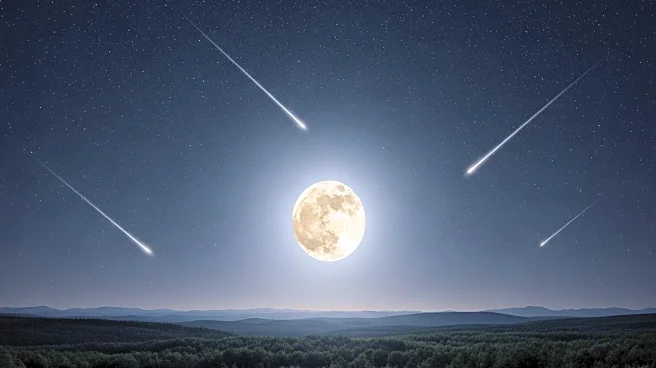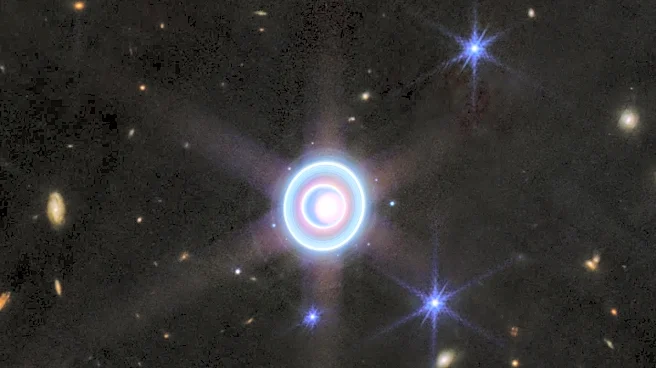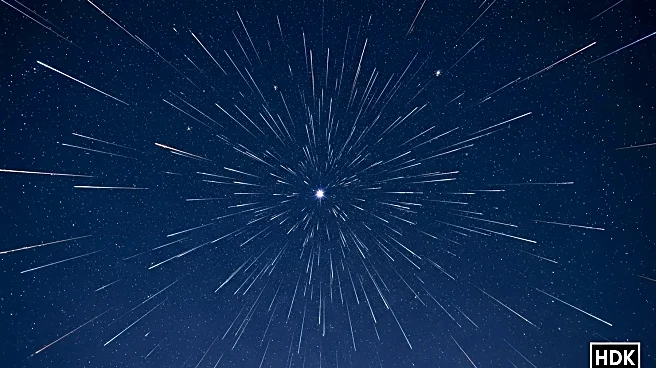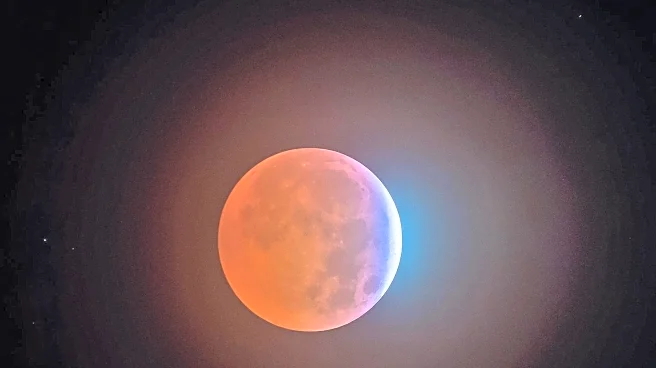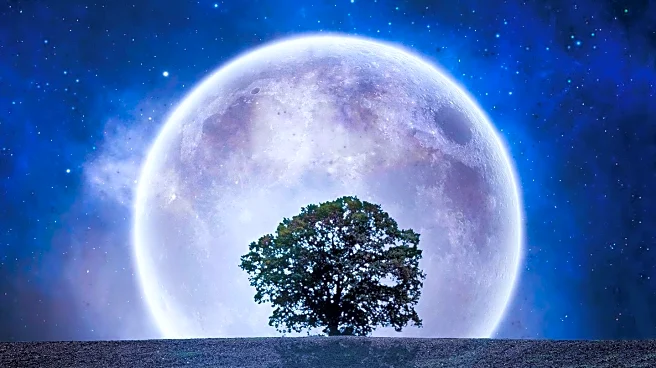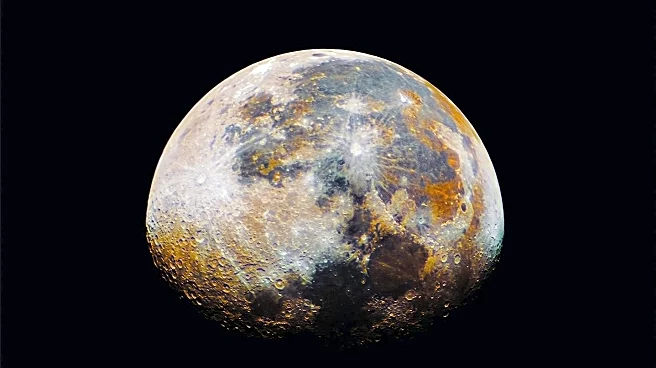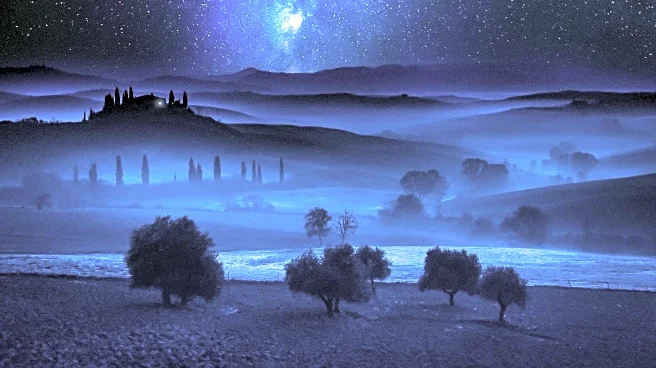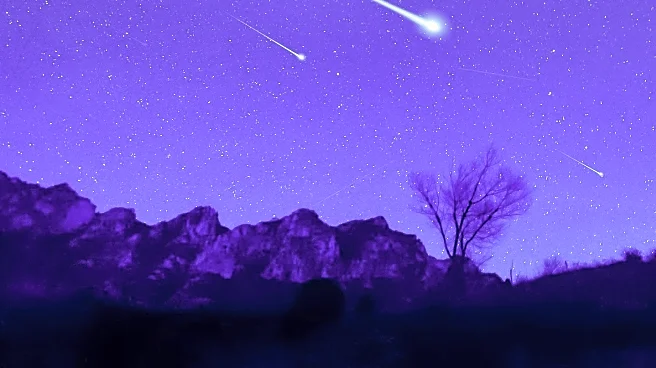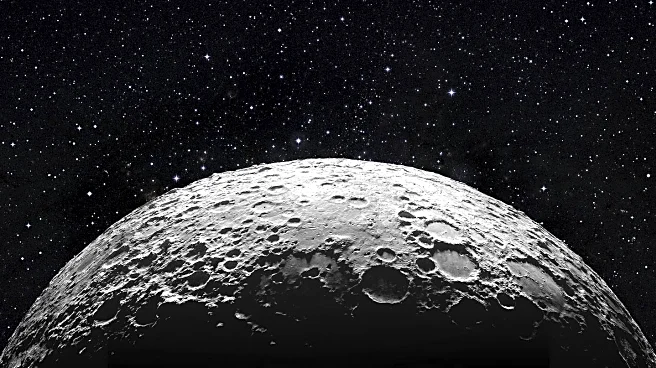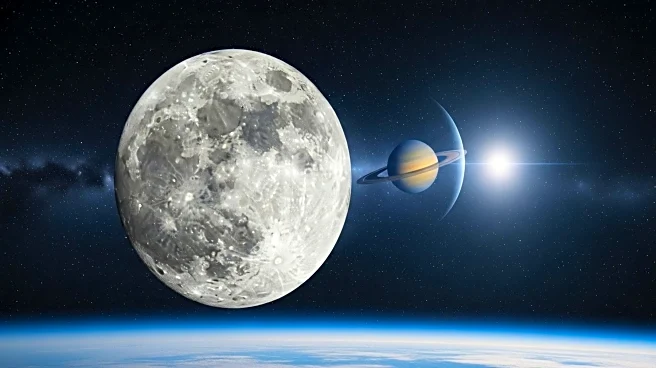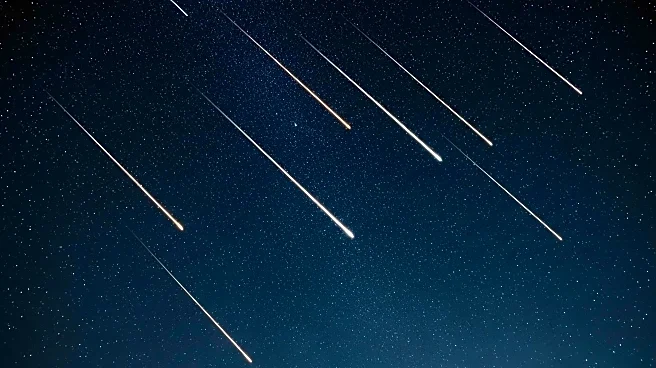What is the story about?
What's Happening?
NASA has announced a series of celestial events occurring on October 6-7, 2025, including the Harvest Supermoon, Draconid meteor shower, and potential auroras. The Harvest Supermoon, the first supermoon of the year, will appear 30% brighter and 14% larger than a typical full moon due to its proximity to Earth. This event coincides with the Draconid meteor shower, which peaks around October 8, although the bright moonlight may obscure many meteors. Additionally, minor geomagnetic storming could lead to aurora sightings in high-latitude regions, following recent solar eruptions.
Why It's Important?
These celestial events offer significant opportunities for skywatchers and astronomers to observe unique phenomena. The Harvest Supermoon provides a chance to study lunar features due to its increased brightness and size. The Draconid meteor shower, despite potential visibility issues, remains a point of interest for meteor enthusiasts. The possibility of auroras adds to the excitement, as they are a visible manifestation of space weather and Earth's magnetic field. These events highlight the interconnectedness of celestial mechanics and human observation, fostering public interest in astronomy.
What's Next?
Skywatchers are advised to monitor local weather forecasts for clear skies and to check aurora alerts for potential sightings. The supermoon will be visible at sunset on October 6, while the Draconid meteor shower requires dark skies away from city lights for optimal viewing. Aurora enthusiasts should keep an eye on geomagnetic storm forecasts, as the arrival of solar eruptions could enhance auroral activity. Observers are encouraged to participate in events like International Observe the Moon Night to share in the lunar enthusiasm.
Beyond the Headlines
The Harvest Supermoon may contribute to higher-than-normal tides, known as 'king tides,' potentially causing minor coastal flooding. This underscores the moon's gravitational influence on Earth's tides. The Draconid meteor shower, while typically modest, has the potential for rare outbursts, adding an element of unpredictability to skywatching. Auroras, linked to solar activity, serve as a reminder of Earth's vulnerability to space weather, emphasizing the importance of monitoring solar cycles.
AI Generated Content
Do you find this article useful?
